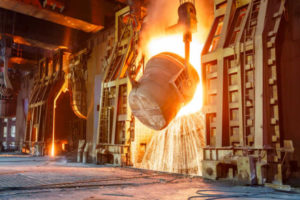Are efforts to meet seemingly arbitrary “green” goals going to cripple the world’s steel industry in the face of growing demand? The industry has worked hard to expand, but faces its assets being regulated out of operation to achieve green goals. Sylvia Pfeifer reports in the Financial Times:
The global steel industry may have to write down as much as $518bn in assets over the coming years because it is still building traditional blast furnaces despite countries seeking to reduce their carbon emissions, according to a report.
Countries have continued to announce new coal-based plants while at the same time setting tougher pledges to lower emissions, according to Global Energy Monitor, an independent non-governmental organisation that tracks fossil fuel and renewable energy projects.
As a result, coal-powered blast furnaces could become unnecessary or inoperable over time, leaving the sector with stranded assets worth between $345bn and $518bn, the report estimates.
The forecasts are significantly higher than previous estimates that put the stranded asset risk for the industry at up to $70bn.
Much of the stranded asset risk is concentrated in Asia, notably China and India, where 80 per cent of the world’s new coal-based steelmaking capacity is planned. The report says 345.3mn tonnes per year of such steel production is currently proposed or under construction.
Decarbonising the production of steel, important for engineering and construction, is seen as essential to meeting global climate targets. The industry is responsible for 7-9 per cent of all direct emissions from fossil fuels, according to the World Steel Association.
Traditional blast furnaces use coking coal to melt the metal in iron ore and remove oxygen. A byproduct of this chemical reaction is carbon dioxide, while large amounts of energy are also required to heat the furnaces above 1,000C.
Some of the world’s biggest manufacturers have launched initiatives to reduce their carbon footprint by expanding the use of electric arc furnaces, which melt down scrap steel and emit a fraction of the carbon dioxide. Many companies are also developing hydrogen and carbon capture technologies but progress remains slow and will need billions of dollars of investment.
The report goes on to warn that the global shift from traditional blast furnaces to electric arc furnaces is “too slow” and “dangerously behind decarbonisation targets” laid out in the International Energy Agency’s net zero 2050 report.
Read more here.

